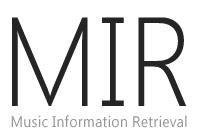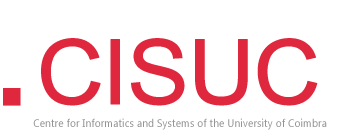 (please refresh your browser)
(please refresh your browser)
July 24, 2025:
New papers . See the Publications section.
New dataset. See the Downloads section.
Intro
Music is all around us. It is in the street and in the bus, in the elevator, in the gym, on radio and TV, in church, in supermarkets, in pubs and, strikingly, on the Internet.
Yes, wherever man is, there is music. Music was, is and will always be present in the lives of people, both individually and socially, through the cultural, leisure, religious or professional dimensions of existence. As a means of celebration, music has always accompanied man’s festive moments. In the expression of human religiosity, music is synonymous of prayer and draws man closer to the transcendent and to the infinite. In sport activities, music can be used to keep an athlete motivated, relax him or help him to focus. Music is a most eloquent form of communication, expressing “that which cannot be put into words and that which cannot remain silent” (Victor Hugo). We associate music with the most unique moments of our lives and music is part of our individual and social imaginary. Yes, life has a soundtrack… And, for that matter, mankind also has, as “the history of a people is found in its songs” (George Jellinek).
Why MIR?
Music Information Retrieval (MIR) is a strongly inter disciplinary research area that has evolved from the necessity to manage huge collections of digital music for “preservation, access, research and other uses” Joe Futrelle and J. Stephen Downie, 2003). This is indubitably a field with tremendous potential for applications.
Despite the surge of interest in recent years, the idea of music information retrieval dates back to the 1960’s, where the potential of applying automatic information retrieval techniques to music was recognized. Moreover, we can look at incipit and theme indexes, e.g., Harold Barlow and Sam Morganstern’s dictionary of musical themes, as the precursors of computer based MIR / MDM.
The current ever increasing awareness given to MIR / MDM research is a direct consequence of the explosion of the EMD industry, promoted by the generalized access to musical materials in digital form (with particular emphasis on compact audio formats with CD or near CD quality, such as mp3), widespread Internet availability, with increasing bandwidth at reduced costs in domestic connections and by the creation of online peer to peer services.
MIR / MDM@ CISUC
Here at CISUC (Center for Informatics and Systems of the University of Coimbra) we have a small and enthusiastic group of people working on MIR / MDM research. In the past, we have conducted work on melody detection in polyphonic audio (see project “Mellodee”). Currently, we are working on a project on mood analysis in audio signals (see project “MOODetector”).

